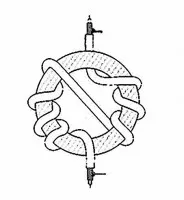Recently, during my forays into the world of single-sideband (SSB) communications on my FX-4CR radio, I encountered a peculiar issue. Fellow ham radio operators, unprompted, reached out to report a vague but noticeable problem with my audio quality. Unfortunately, they couldn’t pinpoint the issue clearly, and I was left without a concrete example of the sound, as my attempts to replicate the problem through WebSDRs across the country were fruitless.
This wasn’t an isolated incident. Other FX-4CR aficionados have stumbled upon this audio anomaly, yet a solution remains elusive. It’s unclear whether the root of the problem lies within the antenna system, the firmware, or perhaps something else entirely. Despite numerous updates aimed at improving voice operation, none seem to address the specific challenge of RF interference directly infiltrating the microphone during transmissions. This is a first for me, as RF issues have never plagued my portable radio adventures before.
Driven by curiosity and a dash of frustration, I decided to tackle this challenge head-on after successfully updating my radio’s firmware via a DIY USB serial cable. My next venture? Crafting an RF choke in hopes of isolating the troublesome RF from my radio setup. Achieving this in a portable setup is no small feat, given the typically short coax run to the antenna. With my antenna setup usually not extending beyond 45 feet to match the length of my telescopic poles, I’m often positioned as far from the antenna as safety and regulations permit when using 100 watts or less. But would an RF choke make a difference in mitigating common mode RF on the coax, or is the near-field proximity to the antenna an insurmountable obstacle?

Inspiration struck upon discovering a blog post by VK6YSF (Peter), who had embarked on a similar project using a toroid (FT-140-43) and RG-316 winding material. Peter’s access to a Vector Network Analyzer—an invaluable tool for testing such a transformer—piqued my interest. While I don’t own such a sophisticated device, an antenna analyzer could serve as a rudimentary alternative for observing SWR changes before and after integrating the transformer. The project called for 19 turns around the core.

My initial attempt at winding the toroid was less than stellar. RG-316 coaxial cable, while ideal for its flexibility, size, and power handling capabilities, proved to be a challenge due to its fragility. Nevertheless, the most significant investment in this endeavor was the FT-140-43 core, priced at approximately $14. With additional minor costs for the case, chassis mount BNC connectors, and coaxial cable, the total came to under $20 for a potentially effective 100W RF isolator. It’s worth noting that this setup is best suited for SSB; for CW or digital modes, the FT-140-43’s efficiency diminishes around 60-70 watts due to overheating concerns.

Looking ahead, I plan to experiment with an FT-240-43 for potentially higher power applications. Stay tuned for updates on this journey through the intricacies of RF isolation and ham radio experimentation, and whether or not this solved the peculiar audio issue I was encountering.
73
W5KV
